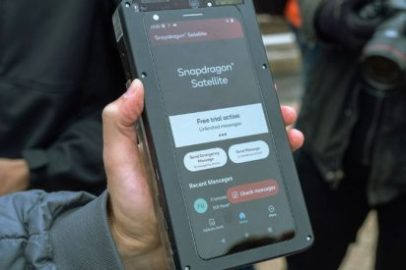Qualcomm and Iridium are working together to bring satellite connectivity to regular smartphones. Let’s see how SMS and satellite calls work.
Some recent rumors have discussed the collaboration between Qualcomm and Iridium to bring satellite connectivity to the new Snapdragon 8 Gen 2.
There is talk of stable connections and more than just a function delegated to emergencies and requests for help, as on the iPhone. However, at the moment, future applications still need to be made clear, but the two companies have made available the details of the potential of this intuition. Let’s find out how technologies from Qualcomm and Iridium could affect the Android device industry.
Qualcomm And Iridium, How Does This Insight Work
The idea of Iridium is to make satellites available in low Earth orbit so they can be used for communications.
With the right tools, it may be possible to use your smartphone to call or text anyone at any time, as long as the device has a clear view of the sky.
To make this possible, the company has partnered with Qualcomm to integrate messaging functionality into new Snapdragon chips as part of the Snapdragon Connect program.
Currently, the function is only on the brand-new Snapdragon 8 Gen 2, generally mounted on high-end smartphones. However, if the intuition were successful, Qualcomm could not exclude making it available on all the chips it produces.
It is straightforward: if a user wants to send a satellite text message with his phone, he has to ensure he is outdoors and that the smartphone can connect to the satellite.
Then, with the same App used for messages, all that remains is to compose the text, point the phone to the sky, and press Send.
At this point, Iridium’s technology will take the information and send it to any other device capable of receiving it. The conditions for receiving are the same as shipping, and you will have to look up (and the phone) to the sky, waiting to align with the satellite.
Satellite SMS, Pros And Cons Of This Technology
The advantage of this technology is that it will be possible to communicate from any point on the planet, even in those remote places where the internet is still a mirage today.
The disadvantages, at the moment, are many more. The first is that such a service will cost more than a classic text message. It could save lives in an emergency, but people would only want to spend exorbitant sums for a statement in everyday situations, especially having dozens of free alternatives available.
The second disadvantage is that we are talking about a more “cumbersome” type of connection than classic communications. It would be best if you were outdoors, pointed the device at the sky, and waited for alignment with the satellite, which is not immediate.
Although there is talk of a phenomenon that is expanding worldwide, users now have no real benefits from using satellite calls and SMS. The situation changes in particular emergency conditions, but those will hopefully never occur.
Also Read: Snapdragon 778G: Qualcomm Wants To Counter Lack Of Chips In 2 Ways


